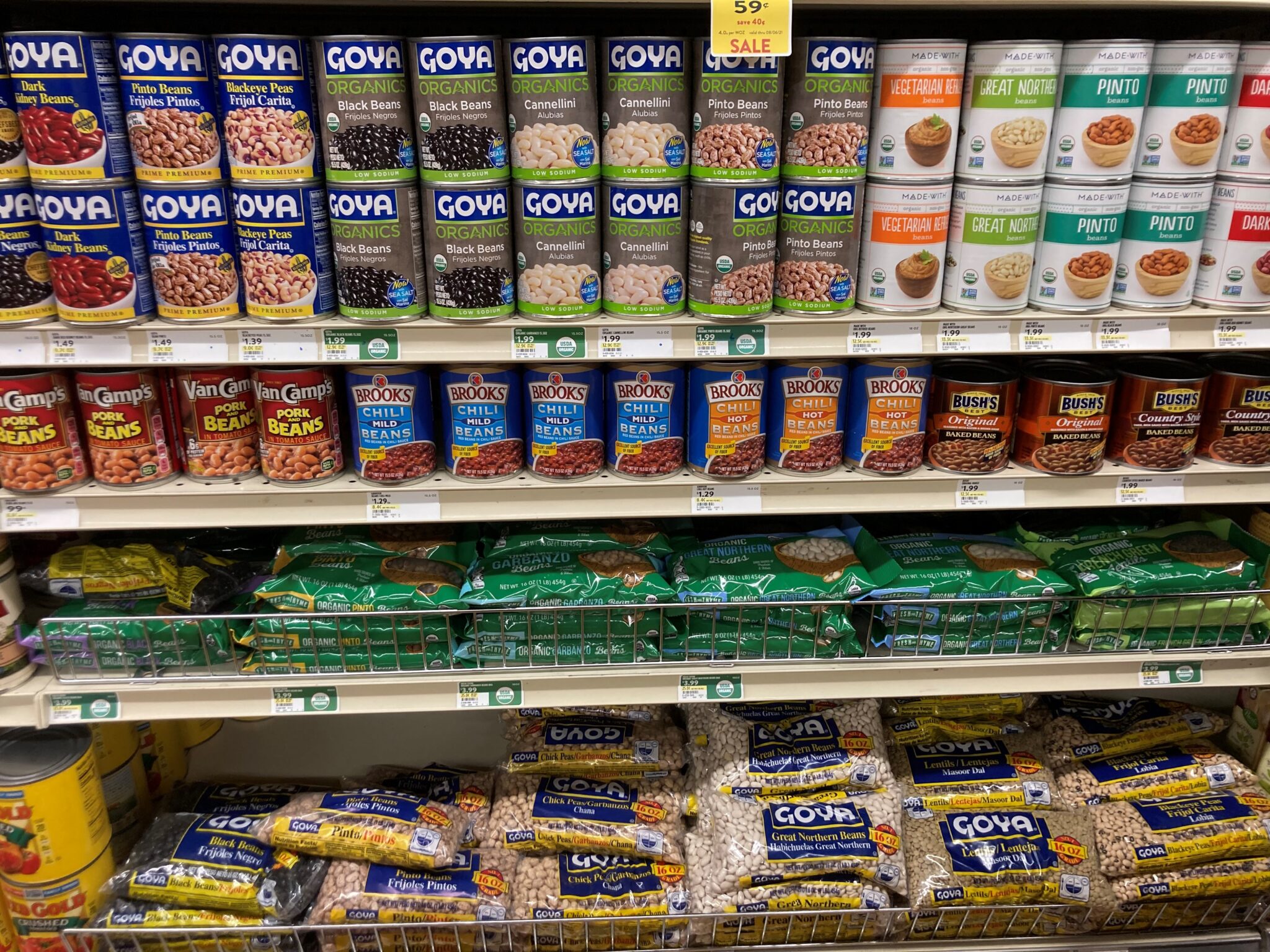Many times I get frustrated when I go to the grocery store. The task seems simple enough; purchase a can of beans. The problem for me as I stare up and down the bean shelf is there are too many darn bean choices. Some are no spice, low spice, medium spice, or hot spice. Some are white beans, red beans, black beans or brown beans. Beans are labeled Company A through Company G. Some are higher price, moderate price or lower price. The beans are canned, in glass, or in a plastic bag. After complete evaluation, I make my decision on what bean type I am going to buy after ten minutes have passed. And then, I need to move up the aisle and do the same thing with corn and carrots.

Spend more time evaluating the right forage variety for purchase than the right bean on the grocery shelf. (Photo Credit: Keith Johnson)
I hope you take more time evaluating what forage species and variety of that species should be purchased than the time taken to buy a vegetable type and brand at the grocery store. I perceive that way too often a producer walks into a business that sells seed and purchases an inferior forage variety because they don’t start the evaluation process soon enough and the top varieties have already been sold, they are novices and don’t realize that there are variety choices within a forage species, or the employee is not fully informed on the differences among species and varieties.
I encourage you to contact seed dealers now if you have perennial forages to seed in August and early September. For those of you planning on seeding cover crops this fall and forages next spring, begin the species and variety selection process sooner than later.
What considerations should be made when selecting a forage variety?
- Select a seed company that has personnel that understands the product they have to sell and can give specific information about forage species and varieties within a species.
- Select a named variety and not one with “Variety Not Stated” or “VNS” on the seedtag. You do not know the genetic attributes of the seed when the variety is not stated.
- Yield – See if yield data is available for performance comparisons among varieties.
- Quality – Always review the seedtag for purity, germination, hard seed amount if a legume, presence of weed seed, testing date, and other attributes listed. A publication regarding seedtag labels can be found at https://extension.purdue.edu/extmedia/AY/AY-375-W.pdf.
Also consider forage quality when selecting a variety. Consider selecting a sorghum-sudangrass or pearl millet with the brown midrib trait for improved digestibility. Less lignin alfalfa varieties are now available, too. Tall fescue variety choice should be a novel endophyte or low-endophyte variety. - Resistance – Diseases that are problematic in your area should be considered when selecting varieties. Genetic resistance to diseases is an important step in reducing damage caused by pathogens. Potato leafhopper resistant alfalfa varieties are available to reduce damage caused by this sap-sucking insect. Orchardgrass leaf diseases can be reduced by selecting varieties with high resistance.
- Persistence – If purchasing a perennial forage, select a species and variety that has proven ability to withstand weather extremes such as very cold winters and drought.
- Maturity of mixtures – If cool-season grasses and legumes are to be sown as a mixture, select a cool-season grass variety that has similar maturity as the legume, especially if the forage is to be harvested as hay or silage.
Taking time to select the right forage species and variety is critical to the success of the forage enterprise.


